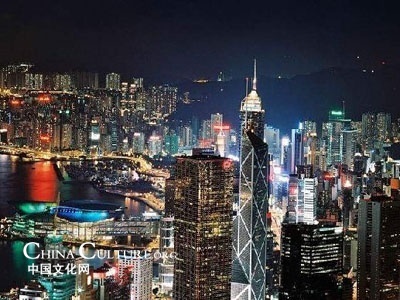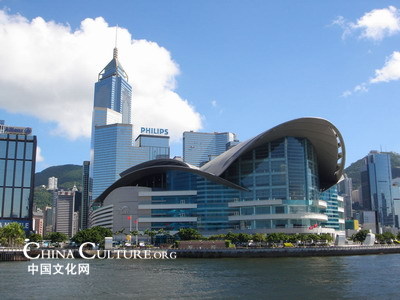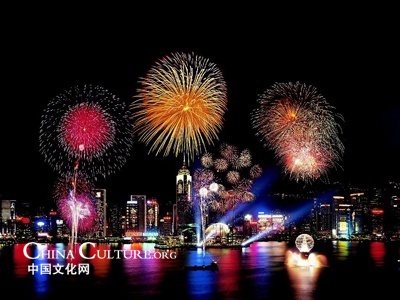Hong Kong, city of life and lights
 |
|
|
Hong Kong! The legendary Chinese city of life and lights, where millionaires rub shoulders with fresh-off-the-boat immigrants, skyscrapers overshadow shanties and class division are as dramatic as the neon that illuminates it all.
Located on the southernmost banks of the Chinese mainland and pressed against the South China Sea, there truly is nowhere else in the world like Hong Kong, for Hong Kong is the World.
It is the best of Beijing and Bangkok, London and Las Vegas, New York and New Delhi; one of the most densely populated dependencies (a landmass of only 1,000 square kilometers for seven million residents), with one of the world's largest revolving multinational communities. Indeed, a stroll around Tsim Sha Tsui (pronounced jimsawjoy), the city's tourist and trade center on the southern Kowloon peninsula, reveals the entire human race in one square block radius: white people in pastel shorts walking side by side with majestically robed Africans, turbaned sheiks haggling with short-tempered Cantonese vendors, and street-corner Hindu hustlers harassing, well, everyone.
The nucleus of TST's international community is found on south Nathan Road, which buzzes 24 hours a day not unlike a third-world beehive. The thoroughfare is lit up with electronics, hazy with Indian incense and resonant with 200bpm Arabic music. It is a warren of the world, a global party, and everyone is invited. As a tailor from Pakistan profoundly puts it, it's the politicians who draw the borders, otherwise we are all friends here.
 |
|
|
And speaking of borders, Victoria Harbor seems a good excuse to divide the colorful crowds of Kowloon with the white-collared world of Hong Kong Island, the territory's banking and finance center. It is across these deep, reflective waters, which at night appear as a veritable liquid rainbow beneath the neon of corporate office towers and designer department stores, where the former crown colony's elite live, work, shop and play. English-speaking Hong Kong, which transferred sovereignty from Britain to the People's Republic in 1997, is 9 percent Chinese save for a wealthier class, namely from South Asian countries and the west, who contribute to the Special Administrative Region's economic might with an unparalleled per capita GDP (310,000 yuan compared to Shanghai's diminutive 47,000 yuan) that rivals most of west Europe and is the highest in China.
 |
|
|
Hong Kong also happens to boast the most millionaires in the entire Asian continent. They are strikingly handsome or unabashedly beautiful. They attire themselves in dark designer suits with razorblade creases and immaculately shined shoes, or dangerously short skirts and even more dangerous stiletto heels. Every automobile in Hong Kong Island not a red taxi is a Ferrari, new-model Jaguar or a white-walled vintage Mercedes. And lest we forget that they drive on what Americans considerto be the wrong side of the road in the British-influenced Hong Kong, look the wrong way before crossing the street and one could get rolled over by a Rolls.
But all that is gold does not necessarily glitter. Beyond Central's escarpment of skyscrapers and scattered about the region's subtropical perimeter lay over 20 lesser islands that seem to jump back centuries. Lantau Island on the West Lamma Channel preciously hides the rustic minority village of Tai O and the Tanka people, descendants of Hong Kong's first settlers.In stark contrast to Hong Kong Island and Kowloon, there is no place in Tai O for finance, fashion or frenzy, where Ferraris are replaced by fishing boats, peasant bags are more useful than Gucci bags, and flip-flops take preference over Prada. The sleepy fishing community of slat-wood, tin-roofed shanties is built completely atop stilts and interconnected by arched bridges occupied by old timers in reed hats whipping their cane rods into the placid delta waters.
Of course, most visitors to Hong Kong will invariably choose Mong Kok to minorities and 500 dollar dim sum to five-dollar fish balls. The compulsion of capitalism, the passion to purchase and the addiction of appearance-it is what Hong Kong has come to be known for, and frankly, to what it owes most of its charm. "Our lives are just like anyone else's," chirps a manicured blonde, the wife of a Hong Kong banker, shopping in an upscale boutique in the Soho district, "but with a few more attached."


















